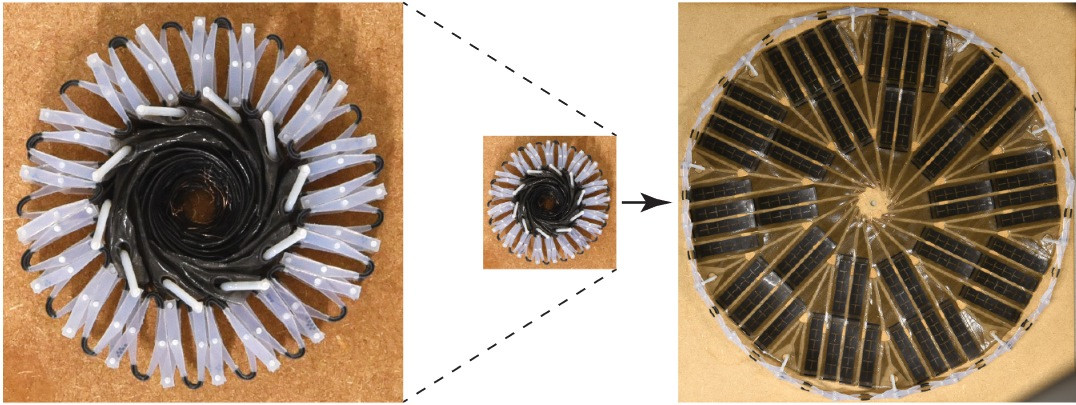This Solar Panel That Can Expand On Its Own At the Correct Temperature
Viswamitra Jayavant - Jul 17, 2019

Researchers have created a type of solar panel using special polymer that can change shape on its own when it's exposed to sunlight.
- India's Kochi Airport Now Has A New Floating Solar Plants
- Startup Turns Windows Into Transparent Organic Solar Panels That Can Generating Electricity
- These Solar Panels Automatically Retract When There's No Sunlight
It is not difficult to understand that for a solar panel to work, it needs sunshine. But while it is okay for large solar power plants to have bulky solar panels, it is a far more difficult situation for space probes and satellites that need every bit of space available. Even though simple deployable solar arrays have been developed for satellites, there is still a lot of room for improvements.
With that in mind, researchers are about to evolve this concept into a type of transformative solar panel that only expand when the Sun shines on it.

The project made use of a type of shape-shifting material that can allow the ‘solar array’ to transform from a compressed state to full deployment. The only trigger needed for this transformation is a change in temperature.
This shape-shifting material is called “shape-memory polymer.” Technically, it can have two forms: A form for when it is cooled, and a natural form when it is heated to a certain level. In the project, the cooled form is a compressed disc, and when it is heated, the disc expands out into a wider one.
The deployment of such an array from its compressed to full form can be as short as a minute. The transformation is ‘guided’ into the correct pattern through a series of hinged joints. The researchers took inspiration from a popular children’s toy, called a Hoberman sphere which can transform itself from a spiky, small ball to a larger spherical one when thrown.

If such an array is implemented on a satellite, there will be quite a lot of benefits. The cooled and compressed array will be stowed compactly during satellite deployment. And when the time is right, the array will be exposed directly to the Sun and expand automatically on its own without the need for the satellite’s internal power. This can be especially useful for small probes which have no space to fit a battery or a spare solar array to kick-start the deployment process.
But at the moment, the transformation is only one way. When it is fully deployed, it will require manual retraction to return to its compressed shape. However, by then it would not be much of a problem as the satellite has already built up its own power and a separate, powered mechanism can retract it until the next opportunity for collecting sunlight begins.
While it is not expected to appear on any satellites by next year just yet, the prototype and the proven science behind this form of solar panels can certainly be taken into account in the development of future satellites. Maybe even in consumer applications, a garden filled with blooming solar arrays sounds cool enough.
Featured Stories

Features - Jul 01, 2025
What Are The Fastest Passenger Vehicles Ever Created?

Features - Jun 25, 2025
Japan Hydrogen Breakthrough: Scientists Crack the Clean Energy Code with...

ICT News - Jun 25, 2025
AI Intimidation Tactics: CEOs Turn Flawed Technology Into Employee Fear Machine

Review - Jun 25, 2025
Windows 11 Problems: Is Microsoft's "Best" OS Actually Getting Worse?

Features - Jun 22, 2025
Telegram Founder Pavel Durov Plans to Split $14 Billion Fortune Among 106 Children

ICT News - Jun 22, 2025
Neuralink Telepathy Chip Enables Quadriplegic Rob Greiner to Control Games with...

Features - Jun 21, 2025
This Over $100 Bottle Has Nothing But Fresh Air Inside

Features - Jun 18, 2025
Best Mobile VPN Apps for Gaming 2025: Complete Guide

Features - Jun 18, 2025
A Math Formula Tells Us How Long Everything Will Live

Features - Jun 16, 2025
Comments
Sort by Newest | Popular